MaryAnn Bernal's Blog, page 245
August 26, 2014
10 Things You Probably Don’t Know About Maine Author Kim Scott
Author Kim Scott
This was then

This is now

Bet you didn't know:
1. I am the second oldest of five children.
2. I’m only 5’1”
3. In college I won the Award for Excellence in Legal Research and Writing
4. I always lie about my age.
5. I don’t drink hot coffee, but I start every morning with a coffee drink (1 cup skim milk, 1 scoop Slimfast chocolate powder, 2 heaping spoons of instant espresso & 1 cup ice water).
6. My favorite fictional character is Agent Pendergast from Douglas Preston & Lincoln Childs.
7. I’m not a fan of lobster, but I love sprimp.
8. As a child I established a library in my home during summer vacation and had a lending program for the other kids in the neighborhood.
9. I love horror movies, but don’t like romance (chic flicks).
10. My favorite colors are earthy green & plum purple.
Want more of Kim? Kindly visit:
http://www.kimscottbooks.com/the-spirits-of-maine-series


This was then

This is now

Bet you didn't know:
1. I am the second oldest of five children.
2. I’m only 5’1”
3. In college I won the Award for Excellence in Legal Research and Writing
4. I always lie about my age.
5. I don’t drink hot coffee, but I start every morning with a coffee drink (1 cup skim milk, 1 scoop Slimfast chocolate powder, 2 heaping spoons of instant espresso & 1 cup ice water).
6. My favorite fictional character is Agent Pendergast from Douglas Preston & Lincoln Childs.
7. I’m not a fan of lobster, but I love sprimp.
8. As a child I established a library in my home during summer vacation and had a lending program for the other kids in the neighborhood.
9. I love horror movies, but don’t like romance (chic flicks).
10. My favorite colors are earthy green & plum purple.
Want more of Kim? Kindly visit:
http://www.kimscottbooks.com/the-spirits-of-maine-series


Published on August 26, 2014 04:54
History Trivia - Julius Caesar and his Roman Legions invade Great Britain
August 26
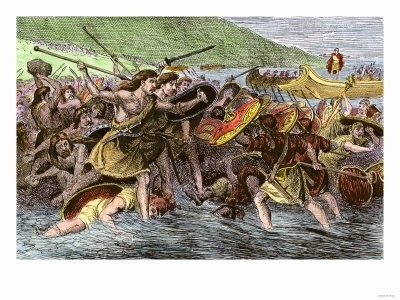
55 BC Julius Caesar and his Roman Legions invaded Great Britain.
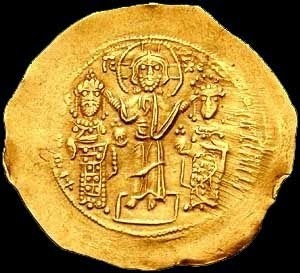
1017 Turks defeated the Byzantine army under Emperor Romanus IV at Manikert, Eastern Turkey.

1429 Joan of Arc made a triumphant entry into Paris.

1466 A conspiracy against Piero di Cosimo de' Medici in Florence, led by Luca Pitti, was discovered.

1498 Michelangelo was commissioned to carve the Pietà.


55 BC Julius Caesar and his Roman Legions invaded Great Britain.

1017 Turks defeated the Byzantine army under Emperor Romanus IV at Manikert, Eastern Turkey.

1429 Joan of Arc made a triumphant entry into Paris.

1466 A conspiracy against Piero di Cosimo de' Medici in Florence, led by Luca Pitti, was discovered.

1498 Michelangelo was commissioned to carve the Pietà.

Published on August 26, 2014 04:53
August 25, 2014
Sphinxes Emerge From Huge Ancient Greek Tomb

by Rossella Lorenzi
Two headless sphinxes emerged from a massive burial site in northern Greece as archaeologists began removing large stones from the tomb’s sealing wall.
The headless, wingless 4.8-foot-high sphinxes each weigh about 1.5 tons and bear traces of red coloring on their feet. They would have been 6.5 feet high with their heads, the Greek Culture Ministry said in a statement.
The statues are believed to have been placed there to guard the burial, which is the largest tomb ever uncovered in Greece.
The tomb dates back to around 325-300 B.C., at the end of the reign of warrior-king Alexander the Great. It lies in the ancient city of Amphipolis, in Greece’s northeastern Macedonia region about 65 miles from the country’s second-biggest city, Thessaloniki.
The city, an Athenian colony, was conquered by Philip II of Macedon, Alexander’s father, in 357 B.C.
Prominent generals and admirals of Alexander had links with Amphipolis. It’s here that Alexander’s wife Roxana and his son Alexander IV were killed in 311 B.C. on the orders of his successor, King Cassander.
Archaeologists began excavating the site, a huge mound complex, in 2012. They revealed a circular tomb measuring 1,600 feet across which featured a 10-foot high perimeter wall. This was built of marble brought from the island of Thassos.
The burial complex site was possibly built by Dinocrates, a famous architect of the time and a close friend of Alexander. It is 10 times larger than the tomb of Alexander’s father, Philip II, which was discovered in Vergina, central Macedonia, in the 1970s.
‘Alexander the Sexy’ Seen in New Portrait
A wide path leads to the tomb whose entrance is guarded by the two sphinx statues.
“Pieces of the sphinx’s wings were found at the site, allowing for a full restoration,” the Greek Ministry of Culture said.
“Part of the back of the statue of the Lion of Amphipolis was also unearthed at the site,” the statement said.
Work led by Katerina Peristeri, the archaeologist in charge of the dig, proved the impressive 16-foot-tall marble lion statue which now stands on a pedestal three miles from the excavation site, once crowned the monumental tomb.
Much of the tomb was demolished during the Roman occupation of Greece, and several marble blocks were reused to stabilize the banks of the river Strymon. It was right on the river bed that the 4th century B.C. lion and other marble blocks were found in 1912 by the Greek army.
Video: Ancient Lost Army Found?
According to the Culture Ministry, the sphinxes and the lion, both in Thassos marble, appear to be have been crafted in the same workshop.
“The seated sphinxes — as opposed to the lying sphinxes in Egyptian art — are unusual,” classical archaeologist Dorothy King wrote in her blog.
“The closest parallel I can think of are those from the Hecatomnid Androns at Labraunda, about a quarter of a century earlier,” she said.
Those bearded Hecatomnid figures reflected Persian royal iconography, King noted.
Behind the sphinx guarded entrance, the archaeologists found a mosaic floor featuring black and white rhombus shapes.
What lies behind the entrance remains a mystery. A geophysical survey carried out last year indicates the interior of the tomb consists of three rooms.
Egyptian City Aligns with Sun on King’s Birthday
Peristeri’s team hopes to fully explore the burial by the end of the month to determine who was laid to rest there.
Archaeologists have debunked speculation that the body of Alexander the Great lies in the tomb. Alexander, the overlord of an empire stretching from Greece to India, died at Babylon, now in central Iraq, in June of 323 B.C. — just before his 33rd birthday.
His elusive tomb is one of the great unsolved mysteries of the ancient world.
History has it that after Alexander died in Babylon, his body, en route to Macedon, was hijacked by Ptolemy and taken to Egypt. The sarcophagus of the warrior king was then moved from Memphis to Alexandria, the capital of his kingdom, and there it remained until late Antiquity.
Toxic Wine Might Have Killed Alexander the Great
By the fourth century A.D., the tomb’s location was no longer known.
At the moment, the leading theory is that a senior general of Alexander’s army was buried in the imposing tomb at Amphipolis.
But what if the Lion Tomb was indeed built for Alexander?
“If Alexander was on his way to being buried in Macedonia when Ptolemy pinched his body … to me that suggests that there was a tomb that had been or was being prepared for him in Macedonia,” King wrote.
Image: The headless sphinxes carved from Thassos marble guard the tomb’s entrance. Credit: Greek Ministry of Culture and Sport.
http://news.discovery.com/history/archaeology/sphinxes-emerge-from-huge-ancient-greek-tomb-140821.htm

Published on August 25, 2014 14:06
Real Paleo Diet: Ancient Humans Ate Snails
By Tia Ghose
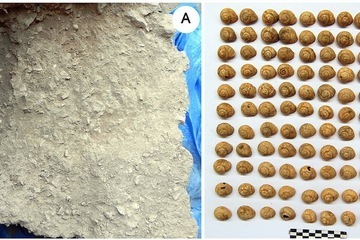
 Archaeologists recently uncovered evidence of (a)a fireplace and (b) snail shells with evidence of burning in a rock shelter in Spain. The find, which dates to 30,000 years ago, suggests humans ate snails during the Paleolithic period.
Archaeologists recently uncovered evidence of (a)a fireplace and (b) snail shells with evidence of burning in a rock shelter in Spain. The find, which dates to 30,000 years ago, suggests humans ate snails during the Paleolithic period.
Credit: Fernández-López de Pablo et al.
Escargot is more than just a modern delicacy: Ancient humans who lived 30,000 years ago ate the mollusks too, a new archaeological excavation has revealed.
Hundreds of burnt snail shells were found near fireplaces along with tools and other animal remains in rock shelters along a cliff in Spain. The finding suggests Paleolithic people on the Iberian Peninsula ate snails more than 10,000 years earlier than those who lived in the neighboring Mediterranean region.
The snails probably didn't make up a calorically significant part of these Paleolithic people's diet, but may have provided key vitamins and nutrients, said study lead author Javier Fernández-López de Pablo, an archaeologist at the Institut Català de Paleoecologia Humana i Evolució Social in Spain
Snail's pace
Neanderthals may have munched on sea slugs, but there isn't much evidence that modern humans ate land-based snails until about 20,000 years ago, Fernández said.
"Even though land snails are very present in paleolithic sites, the interpretation of snails as a food resource is very complicated," Fernández told Live Science.
For one, snails live in the dirt, so it's conceivable they accumulated naturally after dying there. And other predators that eat the mollusks, such as hedgehogs or birds, could also have left snail shells behind after eating the shells' occupants, Fernández said.
Paleo appetizer
Fernández and his colleagues were excavating a site in Benidorm, Spain, about three years ago when they came upon signs of ancient inhabitants. The site, called Cova de la Barriada, contained ancient fireplaces, stone tools, animal bones — and hundreds of snail shells close to the evidence of ancient cooking. The other animal bones found at the site appeared to have been intentionally fractured by people to extract the marrow, Fernández said.
The snail shells were burnt and all came from the same species, Iberus alonensis, which even today is a delicacy often found in Spanish dishes like paella, Fernández said.

[image error] Archaeologists recently found evidence of ancient human consumption of snails at a rock shelter in Spain called Cova de Barriada
Archaeologists recently found evidence of ancient human consumption of snails at a rock shelter in Spain called Cova de Barriada
Credit: Fernández-López de Pablo et al.
View full size imageThe snail shells were also found along with charcoals of pine and juniper. In addition, the snails were all about the same size, indicating they were harvested when they were fully grown, at about 1 year old.
Together, the findings suggest the ancient inhabitants of the region ate the snails as a regular part of the diet. Snails are rich sources of vitamins A, B3, B6 and B12, and also provide a hearty helping of cholesterol, he said.
By harvesting only adults, the ancient people had developed a "sustainable" farming practice that, based on the size of snail shells found in multiple geologic layers, lasted for 4,000 years, Fernández said.
It's not clear why people were eating snails at this time and not earlier, but human cultures were going through a transition at this point, with the emergence of new artistic expression in cave paintings and living in larger settlements. So it's possible that society was also changing in ways that enabled them to use dietary resources in their environment more effectively, Fernández said.
http://www.livescience.com/47466-paleolithic-humans-ate-snails.html


 Archaeologists recently uncovered evidence of (a)a fireplace and (b) snail shells with evidence of burning in a rock shelter in Spain. The find, which dates to 30,000 years ago, suggests humans ate snails during the Paleolithic period.
Archaeologists recently uncovered evidence of (a)a fireplace and (b) snail shells with evidence of burning in a rock shelter in Spain. The find, which dates to 30,000 years ago, suggests humans ate snails during the Paleolithic period.Credit: Fernández-López de Pablo et al.
Escargot is more than just a modern delicacy: Ancient humans who lived 30,000 years ago ate the mollusks too, a new archaeological excavation has revealed.
Hundreds of burnt snail shells were found near fireplaces along with tools and other animal remains in rock shelters along a cliff in Spain. The finding suggests Paleolithic people on the Iberian Peninsula ate snails more than 10,000 years earlier than those who lived in the neighboring Mediterranean region.
The snails probably didn't make up a calorically significant part of these Paleolithic people's diet, but may have provided key vitamins and nutrients, said study lead author Javier Fernández-López de Pablo, an archaeologist at the Institut Català de Paleoecologia Humana i Evolució Social in Spain
Snail's pace
Neanderthals may have munched on sea slugs, but there isn't much evidence that modern humans ate land-based snails until about 20,000 years ago, Fernández said.
"Even though land snails are very present in paleolithic sites, the interpretation of snails as a food resource is very complicated," Fernández told Live Science.
For one, snails live in the dirt, so it's conceivable they accumulated naturally after dying there. And other predators that eat the mollusks, such as hedgehogs or birds, could also have left snail shells behind after eating the shells' occupants, Fernández said.
Paleo appetizer
Fernández and his colleagues were excavating a site in Benidorm, Spain, about three years ago when they came upon signs of ancient inhabitants. The site, called Cova de la Barriada, contained ancient fireplaces, stone tools, animal bones — and hundreds of snail shells close to the evidence of ancient cooking. The other animal bones found at the site appeared to have been intentionally fractured by people to extract the marrow, Fernández said.
The snail shells were burnt and all came from the same species, Iberus alonensis, which even today is a delicacy often found in Spanish dishes like paella, Fernández said.

[image error]
 Archaeologists recently found evidence of ancient human consumption of snails at a rock shelter in Spain called Cova de Barriada
Archaeologists recently found evidence of ancient human consumption of snails at a rock shelter in Spain called Cova de BarriadaCredit: Fernández-López de Pablo et al.
View full size imageThe snail shells were also found along with charcoals of pine and juniper. In addition, the snails were all about the same size, indicating they were harvested when they were fully grown, at about 1 year old.
Together, the findings suggest the ancient inhabitants of the region ate the snails as a regular part of the diet. Snails are rich sources of vitamins A, B3, B6 and B12, and also provide a hearty helping of cholesterol, he said.
By harvesting only adults, the ancient people had developed a "sustainable" farming practice that, based on the size of snail shells found in multiple geologic layers, lasted for 4,000 years, Fernández said.
It's not clear why people were eating snails at this time and not earlier, but human cultures were going through a transition at this point, with the emergence of new artistic expression in cave paintings and living in larger settlements. So it's possible that society was also changing in ways that enabled them to use dietary resources in their environment more effectively, Fernández said.
http://www.livescience.com/47466-paleolithic-humans-ate-snails.html

Published on August 25, 2014 14:00
History Trivia - Julian Caesar defeats the Alamanni at Strousbourg
August 25
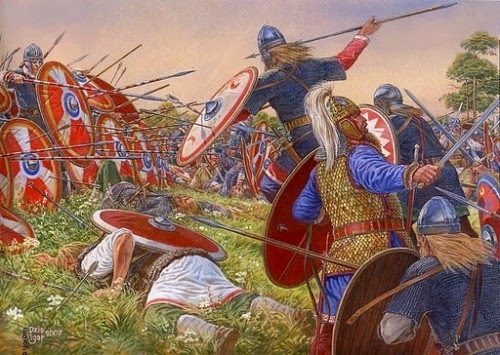
357 Julian Caesar defeated the Alamanni (alliance of German tribes) at Strousbourg in Gaul.

608 Boniface IV became Roman Catholic pope.

1270 King Louis IX of France (Saint Louis) died in northern Africa while leading the Eighth Crusade.
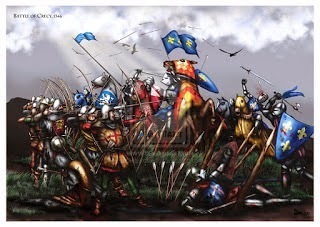
1346 Edward III of England defeated Philip VI's army at the Battle of Crecy in France.

1549 Kett's Rebellion was a revolt in Norfolk, England during the reign of Edward VI. The rebellion was in response to the enclosure of land. It began in July 1549 but was eventually crushed by forces loyal to the English crown when the Earl of Warwick attacked and entered Norwich on August 25.


357 Julian Caesar defeated the Alamanni (alliance of German tribes) at Strousbourg in Gaul.

608 Boniface IV became Roman Catholic pope.

1270 King Louis IX of France (Saint Louis) died in northern Africa while leading the Eighth Crusade.

1346 Edward III of England defeated Philip VI's army at the Battle of Crecy in France.

1549 Kett's Rebellion was a revolt in Norfolk, England during the reign of Edward VI. The rebellion was in response to the enclosure of land. It began in July 1549 but was eventually crushed by forces loyal to the English crown when the Earl of Warwick attacked and entered Norwich on August 25.

Published on August 25, 2014 04:58
August 24, 2014
History Trivia - Mount Vesuvius erupts, burying Pompeii, Herculaneum, and Stabiae in volcanic ash
August 24,
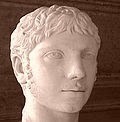
49 BC Julius Caesar's general Gaius Scribonius Curio was defeated in the Second Battle of the Bagradas River by the Numidians under Publius Attius Varus and King Juba of Numidia. Curio committed suicide to avoid capture.

79 Mount Vesuvius erupted. The cities of Pompeii, Herculaneum, and Stabiae were buried in volcanic ash Pliny the Elder died of asphyxiation at age 56 while witnessing the scene from the coast.

410 Alaric, leader of the Visigoths, sacked Rome, but spared its churches. This was first hostile occupation of the city since the fourth century BC.

1113 Geoffrey Plantagenet, Count of Anjou and ancestor of the Plantagenet kings of England was born.

1200 King John of England, signee of the first Magna Carta, married Isabella of Angouleme in Bordeaux Cathedral.


49 BC Julius Caesar's general Gaius Scribonius Curio was defeated in the Second Battle of the Bagradas River by the Numidians under Publius Attius Varus and King Juba of Numidia. Curio committed suicide to avoid capture.

79 Mount Vesuvius erupted. The cities of Pompeii, Herculaneum, and Stabiae were buried in volcanic ash Pliny the Elder died of asphyxiation at age 56 while witnessing the scene from the coast.

410 Alaric, leader of the Visigoths, sacked Rome, but spared its churches. This was first hostile occupation of the city since the fourth century BC.

1113 Geoffrey Plantagenet, Count of Anjou and ancestor of the Plantagenet kings of England was born.

1200 King John of England, signee of the first Magna Carta, married Isabella of Angouleme in Bordeaux Cathedral.

Published on August 24, 2014 05:01
August 23, 2014
Facebook Event - August 30th is the launch party for Book 2 in The Spirits of Maine Series!
 August 30th is the launch party for Book 2 in The Spirits of Maine Series! This is the sequel to the Ghost Story 'Waiting for Harvey'. Come join the Party & Bring your Friends!
August 30th is the launch party for Book 2 in The Spirits of Maine Series! This is the sequel to the Ghost Story 'Waiting for Harvey'. Come join the Party & Bring your Friends! The 3rd book in this series will be out in late December.
https://www.facebook.com/events/273601332826606/

Published on August 23, 2014 14:22
All 3 Novellas in "The Someone To Love Me" Trilogy by Gladys Quintal, in one paperback - available now
 All 3 Novellas in "The Someone To Love Me" Trilogy, in one paperback......
All 3 Novellas in "The Someone To Love Me" Trilogy, in one paperback......Now available at Amazon: http://www.amazon.com/Someone-Love-Trilogy-Undeserving-Understanding/dp/1500821365
Undeserving (Novella #1 in the Someone To Love Me trilo...gy)
All of her life, Bree had been treated badly by men. According to her mother, it was just the way it was with the women in her family and there was no point in trying to fight it. There was no sense in dreaming about Prince Charming right out of the story books, he just didn't exist. She had to accept her fate and move on. It was as simple as that.
Bree craved love. She longed for a man to promise her his heart and soul and protect her from the monsters that she had grown accustomed to. She prayed that her mother was wrong and that one day he would find her.
Unforgiving (Novella #2 in the Someone To Love Me trilogy)
When she is given a second chance, Bree tries to put the pieces of her shattered life back together. Without her abusive husband ruling her every move, she begins to enjoy her newly found freedom and decides to explore her feelings for his younger brother.
But is the violence truly over? Or is Bree undeserving as her mother always said she was......
Understanding (Novella #3 in the Someone To Love Me trilogy)
Still believing that her mother may have been right and everything she touches turns to dust, Bree decides to break away from the entire Butler family. Can she put the pieces of her shattered past behind her and start afresh on her own? Or will Trey's undying love draw her back into his arms and into his world once more.

Published on August 23, 2014 14:17
History Trivia - William Wallace, Scottish patriot, executed for high treason
August 23

79 Mount Vesuvius ( a stratovolcano on the Bay of Naples, Italy) began to stir, on the feast day of Vulcan, the Roman god of fire.

93 Gnaeus Julius Agricola, Roman Governor of Britain died.

406 Battle at Florence: Stilicho's Roman army beat Radagaisus' Barbarians. Radagaisus King of the Goths (East Germanic tribe of Scandinavian origin) was captured and executed.
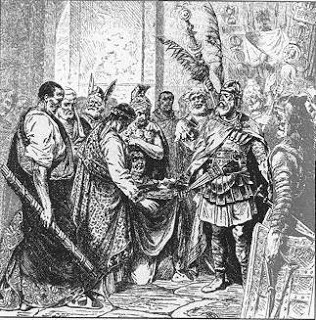
476 Germanic warrior Odoacer was elected King of Byzantium.

686 Charles Martel, grandfather of Charlemagne, was born.

1305 William Wallace, Scottish patriot, was executed for high treason by Edward I of England.


79 Mount Vesuvius ( a stratovolcano on the Bay of Naples, Italy) began to stir, on the feast day of Vulcan, the Roman god of fire.

93 Gnaeus Julius Agricola, Roman Governor of Britain died.

406 Battle at Florence: Stilicho's Roman army beat Radagaisus' Barbarians. Radagaisus King of the Goths (East Germanic tribe of Scandinavian origin) was captured and executed.

476 Germanic warrior Odoacer was elected King of Byzantium.

686 Charles Martel, grandfather of Charlemagne, was born.

1305 William Wallace, Scottish patriot, was executed for high treason by Edward I of England.

Published on August 23, 2014 05:39
August 22, 2014
Volunteers help British Museum in crowdsourcing archeology project
Thousands log on to transcribe handwritten catalogue dating back to 18th century and put 30,000 ancient objects online
Maev Kennedy
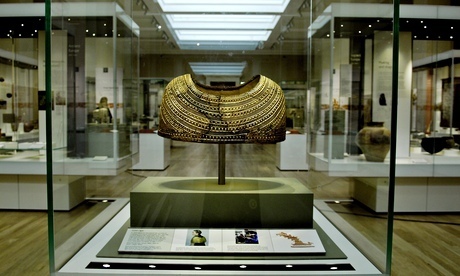
The bronze age exhibition at the British Museum. Photograph: Sarah Lee for the GuardianA 3D plastic model of a 3,000-year-old bronze axe – stored in the British Museum since it was found more than 30 years ago at Jevington, East Sussex – has been printed out in a public library in Washington DC through a unique experiment in crowdsourcing archaeology.
Volunteers worldwide are logging on to help transcribe more than 30,000 handwritten catalogue cards dating back to the late 18th century, and making digital photographs of thousands of ancient bronze objects so they can be stitched together to form 3D images.
The catalogue records and the images – which are freely available in return for the volunteers' help and are starting to appear on T-shirts and as miniature axe-head jewellery – will form one of the largest databases of prehistoric metalwork in the world.
There will be no copyright on the objects or the information, and the project is entirely built on open-source software, so could be copied anywhere. Producing the axe at an archaeology open day in Washington DC was the idea of volunteer Joseph Koivisto, a research assistant at the Catholic University of America.
Daniel Pett, of the British Museum, who jointly leads the MicroPast project with Andrew Bevan, of University College London, said: "There's something quite magical about the idea of an object that is still safely in our stores being given to a child to hold and experience so far away."
Neil Wilkin, curator of the bronze age collections at the British Museum, finds the enthusiasm of the volunteers, who include students, amateur archaeologists, office workers, doctors and teachers, heartwarming. "Opening the treasures of the bronze age to the widest public is why I get up," he recently tweeted.
Some of the volunteers have completed only a few tasks while others are becoming hooked. The busiest is Joellen McGann – thought to be from the US – who joined on day one, and to date has completed 2,905 tasks.
The index cards, many with hand-drawn illustrations, make up a catalogue which was once state of the art and maintained by Wilkin's predecessors.
It was founded in 1913 – but incorporated much older records – and moved to Bloomsbury in the 1920s. In the digital era it was increasingly falling out of use. The cards had been recorded as digital photographs, but could not be searched online until the wealth of information they held about the objects, including where and when they were found, was transcribed.
Wilkin said museum staff would have taken years to do the job, and the funding would probably never have been found. The crowdsourcing was launched in April, with a grant from the Arts and Humanities Research Council, and is on target to complete the project within a year.
The information will be added to the huge Portable Antiquities database – recording archaeological finds made by members of the public, mainly with metal detectors – which will soon record the millionth object since it was launched as a pilot scheme in 1997.
http://www.theguardian.com/science/2014/aug/18/volunteers-british-museum-crowdsourcing-archeology
Maev Kennedy

The bronze age exhibition at the British Museum. Photograph: Sarah Lee for the GuardianA 3D plastic model of a 3,000-year-old bronze axe – stored in the British Museum since it was found more than 30 years ago at Jevington, East Sussex – has been printed out in a public library in Washington DC through a unique experiment in crowdsourcing archaeology.
Volunteers worldwide are logging on to help transcribe more than 30,000 handwritten catalogue cards dating back to the late 18th century, and making digital photographs of thousands of ancient bronze objects so they can be stitched together to form 3D images.
The catalogue records and the images – which are freely available in return for the volunteers' help and are starting to appear on T-shirts and as miniature axe-head jewellery – will form one of the largest databases of prehistoric metalwork in the world.
There will be no copyright on the objects or the information, and the project is entirely built on open-source software, so could be copied anywhere. Producing the axe at an archaeology open day in Washington DC was the idea of volunteer Joseph Koivisto, a research assistant at the Catholic University of America.
Daniel Pett, of the British Museum, who jointly leads the MicroPast project with Andrew Bevan, of University College London, said: "There's something quite magical about the idea of an object that is still safely in our stores being given to a child to hold and experience so far away."
Neil Wilkin, curator of the bronze age collections at the British Museum, finds the enthusiasm of the volunteers, who include students, amateur archaeologists, office workers, doctors and teachers, heartwarming. "Opening the treasures of the bronze age to the widest public is why I get up," he recently tweeted.
Some of the volunteers have completed only a few tasks while others are becoming hooked. The busiest is Joellen McGann – thought to be from the US – who joined on day one, and to date has completed 2,905 tasks.
The index cards, many with hand-drawn illustrations, make up a catalogue which was once state of the art and maintained by Wilkin's predecessors.
It was founded in 1913 – but incorporated much older records – and moved to Bloomsbury in the 1920s. In the digital era it was increasingly falling out of use. The cards had been recorded as digital photographs, but could not be searched online until the wealth of information they held about the objects, including where and when they were found, was transcribed.
Wilkin said museum staff would have taken years to do the job, and the funding would probably never have been found. The crowdsourcing was launched in April, with a grant from the Arts and Humanities Research Council, and is on target to complete the project within a year.
The information will be added to the huge Portable Antiquities database – recording archaeological finds made by members of the public, mainly with metal detectors – which will soon record the millionth object since it was launched as a pilot scheme in 1997.
http://www.theguardian.com/science/2014/aug/18/volunteers-british-museum-crowdsourcing-archeology

Published on August 22, 2014 16:30



